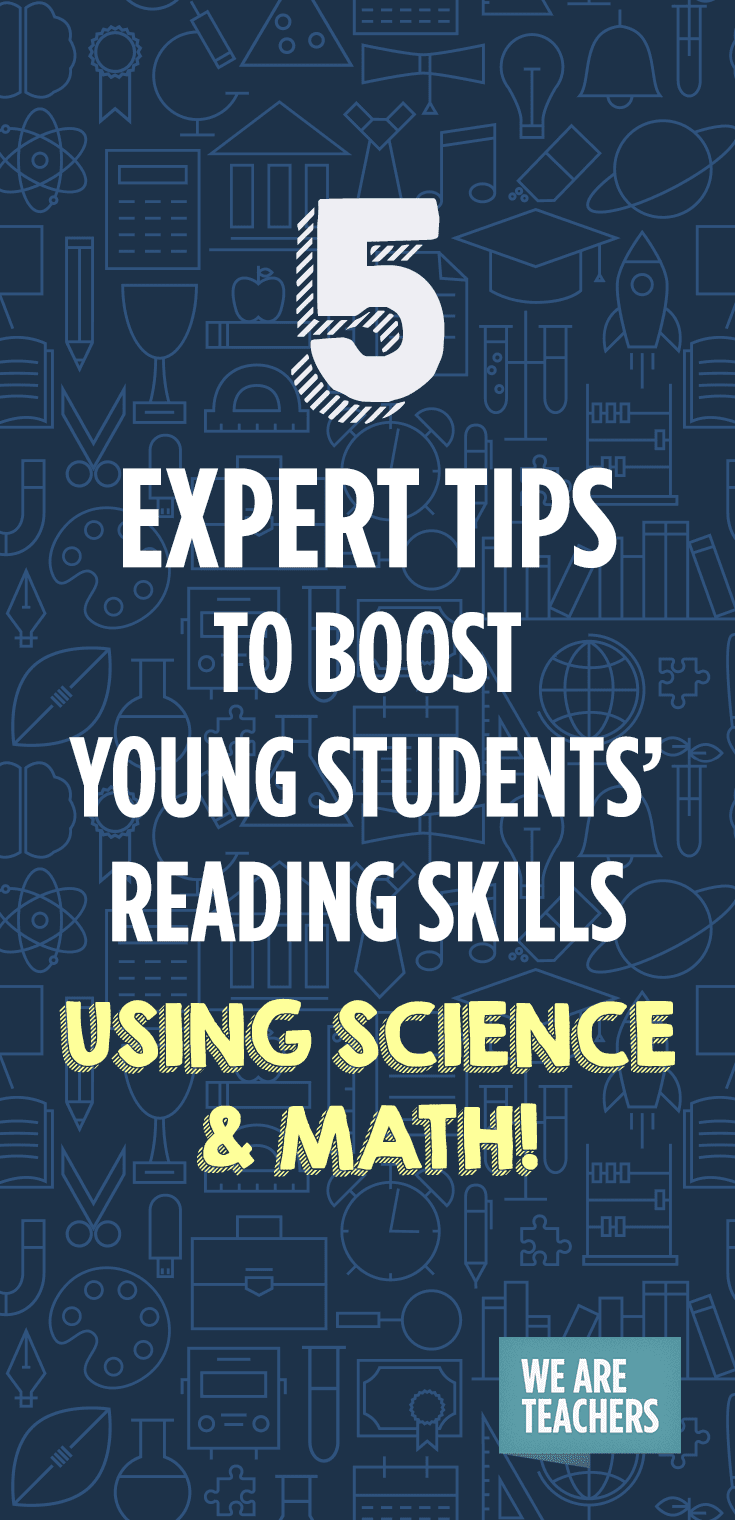When you think of reading instruction, what pops into your mind? A teacher and a few kids around a kidney table all reading from the same-level book? Well, that’s one part of an effective reading program, but there are opportunities for rich language learning across the curriculum. We spoke with three experts from Waterford Institute, nonprofit creator of Waterford Early Learning software, to find out the best ways to improve reading skills while teaching science and math.
1. Give students lots of time to read nonfiction.
Young kids are fascinated with the world and how it works. So it only makes sense that they are naturally drawn to books about real content, whether their interests lie with animals, weather, cars, whatever! According to Kimberley Sorenson, curriculum director for Waterford Institute, “If you try to take young children straight to direct reading instruction without cultivating this intrinsic excitement, you run the risk of losing them. For some kids the magic hook is going to be “if I read, I’m going to figure stuff out!”
2. Start your math and science lessons with a story.
Use literacy to launch into all concepts. For example, if you’re teaching about the number three, start by reading a story about three friends who eat three sandwiches and ride three bicycles to the park. (Chester’s Way by Kevin Henkes is a great book!) Or read Frog and Toad All Year by Arnold Lobel, a story about friendship, with one chapter set in each season to introduce the concept of seasons. Math and science are more meaningful for children set in actual context that they can relate to, especially if the learning is embedded into a story with characters kids know and care about. Vicki Maetani, former Director of Instructional Design at Waterford Institute, says, “When kids are introduced to a concept through story, it is more meaningful and impactful than if they just do an activity by itself. They need literature to set the stage.”
3. Use a multisensory approach.
Approach every learner individually by taking advantage of as many pathways as you can. Use literature (fiction and nonfiction books and magazines), songs, games (board games and cards), and concrete activities (manipulatives, experiments, nature walks), so that no matter how a child learns, there will be some connection that matters to them, and learning will be more likely to land in their long-term memory. In addition, using technology (videos, interactive computer programs, and iPad apps, like Waterford’s My Backpack) is a great way to invite reluctant learners into the process. Some early childhood programs even provide individualized practice with math and science skills that also tie into literacy.
4. Build time into your math and science lessons for students to talk about what they’re learning.
Curriculum designer Amie Wood sees math instruction, in particular, as the perfect opportunity to help students develop oral language skills. “So much of math is developing oral language because you’re explaining about how you did something, and that transfers directly to reading and writing skills. I felt students in my class developed their language better by talking about what they did in math- having it modeled to them, particularly with regard to speaking in complete sentences.”Talking about math and science not only helps students develop oral language skills, it helps them develop a particularly refined type of language skills. According to Sorenson, “Science and math are golden times for helping to teach accuracy and precision in language. You have to use precise language in explaining math and science concepts. The language you use really matters when describing something that is unfamiliar—that can’t be described in another way. Students have to listen carefully and follow directions.”
5. Complicate things a bit.
When teaching math and science, it’s tempting to mistake engagement for instruction. Especially when planning hands-on activities, don’t assume that kids are learning just because they’re having fun. In order for growth and deeper understanding to occur, the content has to be linked to something more than playing. As Sorenson explains, “As teachers, we need to be aware that the value we add is not just providing fun but helping them by complicating the process a bit (a la Vygotsky) by introducing vocabulary, asking good questions, pointing out patterns, etc. It’s important that teachers are as thoughtful about how they present math and science as they are about how they present literacy.”
To find out more about boosting your students’ literacy skills using math and science, check out Waterford EarlyLearning.



